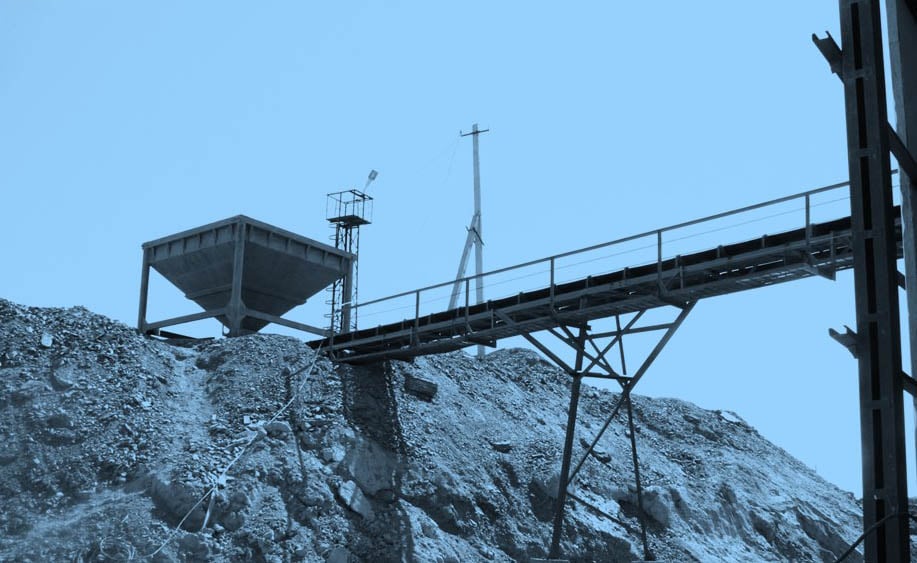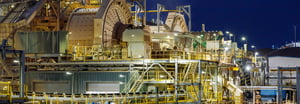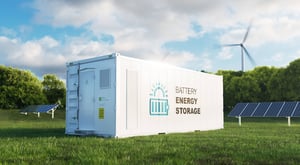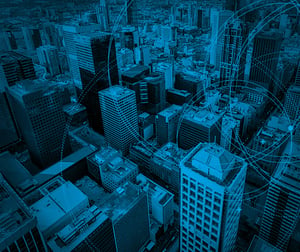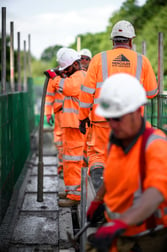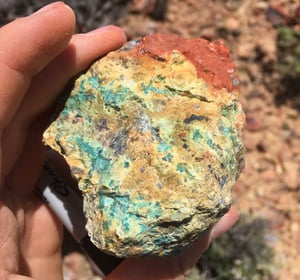Ferro-Alloy Resources plc (LON:FAR) Chief Executive Officer Nick Bridgen caught up with DirectorsTalk to discuss their trading update, a step change in 2023, grant to make VRFB and the progress of the feasibility study.
Q1: This RNS, it’s mainly about the existing operation, how important is this to the big picture of Ferro-Alloy Resources?
A1: It’s important and not important. In broad numbers, it’s insignificant because 96% of our projected value, according to our projections, comes from the main project and only 4% from this existing operation.
On the other hand, it’s very important as it feeds us, it’s going to be making money which means that we don’t have to raise more money to do the feasibility study and frontend engineering, and it’ll reduce the money we need to raise.
Even more importantly, it gives us the knowhow, the experience. We’ve got 200 employees that all know what they’re doing and they will switch seamlessly into the big project as we build it. So, it greatly de-risks the big project.
So, it is important but in the grand scheme of things, perhaps it’s not so important financially.
Q2: The RNS says that 2023 is likely to be much better than 2022, can you tell us what’s going to change?
A2: 2022 was a pretty dismal year for us for a number of reasons.
First, mostly to do with the world politics, at the beginning of the year we were recovering from COVID and all the transport links we disrupted and everything was expensive and delayed. Then, of course, we had our own riots in Kazakhstan which produced a bit of a delay, and then we’ve had the Ukraine invasion which has upset all our transport routes. All in all, we’ve had a pretty bad year.
2023 is going to be a step change really, chalk and cheese change. Not only do I hope that the world political situation will recover, it is already recovering and it’s a horrible thing to say but the world is learning to live with Ukraine transport routes, the costs are coming down. Because we know our existing suppliers have problems, we’ve doubled up, we’ve got a new contract with a new supplier so the concentrate shortages should be a thing of the past, and we’re recovering a lot more value from each tonne treated.
Coincidently, almost all the big projects came on line at the end of last year, or very early this year, in that we’ve doubled up the moly circuit so we’re capable of recovering up to the double the amount of moly, obviously it depends on what’s in the concentrates. Moly, the price has gone through the roof, it’s about 2.5 times where it was at the beginning of the year. We’ve got a new press-filter which means we can do a second pass recovery of vanadium, get a few more percent recovery and we’ve got what we call a dissociation oven which means we can convert the AMV to V2O5 which gets us slightly higher price. We’ve also got the nickel project on line, the residues from all that we’ve done already is low grade nickel concentrate and we’ve now put the kit in to raise it and get a much higher value for it.
So, really, in very round simple terms, doubling the amount of concentrates and doubling the revenue from each tonne we treat so it really is a radical change and I’m very optimistic for 2023.
Q3: You’ve received a grant to make electrolyte for vanadium redox flow batteries, first of all can you tell us what these batteries are, and then what this means for Ferro-Alloy Resources?
A3: This is interesting. First of all, there is no market at present for this material in our area so this is all about positioning. We announced some time ago that we had the technology to make the oxides of vanadium that are used to make electrolyte, in other words to make electrolytes.
What vanadium redox flow batteries are, to give them their full title, is a form of battery that is suitable for bulk and long term energy storage, they’ll never be used in cars or mobile phones, that’s all lithium-ion territory. They’re big heavy things with liquid sloshing around in them but they are the front running technology for this bulk energy storage so if a grids is dependent on solar or wind, it needs battery storage to make it available 24 hours a day.
It is the front running technology, there are other technologies, there’s no guarantees in this but what we’re doing is positioning ourselves to take advantage of this market. We’ve got the technology, we’ve proven that previously, and now we’re doing a project with a local university department to make the electrolyte, sell it and get ourselves ready.
Because electrolyte has got vanadium in it but it’s also got a lot of water and sulfuric acid, there’s no point in shipping water and sulfuric acid around the world, that’s a dangerous cargo. So, as this technology takes off, I envisage that we’ll become a regional supplier for all those batteries that come within our range.
I could be a huge market, there’s no guarantees, people have been forecasting this for a long time and it’s taking longer to take off than people thought but it’s very exciting for vanadium and therefore for us if it does take off. So, we’re positioning ourselves ready to take advantage of that market. Of course, the big benefits will come when the big project is on stream, we’ll have much more capacity, but this way we get all the knowhow and we can develop the market ahead of time.
Q4: Where are you up to with the feasibility study?
A4: Of course, this is the important question. As I said, 96% of our value projected is in the big project, really, things take a long time but we’re getting there.
We’ve finished the drilling, we’ve completely finished ore body one so that is now with SRK, our consultants who will do the new reserve and that will come out around the end of next month, may be the next one if they’re slow about it. Ore bodies two, three and four, the drilling has been done all bar an area that’s difficult to access so we’re going to see what the results are to date. If that gives us enough ore reserve then we’ll stop but we have the option to drill a bit more of ore bodies five or six instead. We’ve got lots of ore bodies, we’ve got huge amounts of vanadium, more than we’re projected to use up in our phase I and our phase II developments so that’s in hand.
That will prove what we already know, that there’s a huge deposit here, and of course the metallurgy is progressing, that’s quite long winded nowadays, you need to do all the basic testing, the variability testing and that’s in progress. That will be announced over the next 2-3 months, I guess so we’re getting there, projected to be in the last quarter of this year, to be announced.


